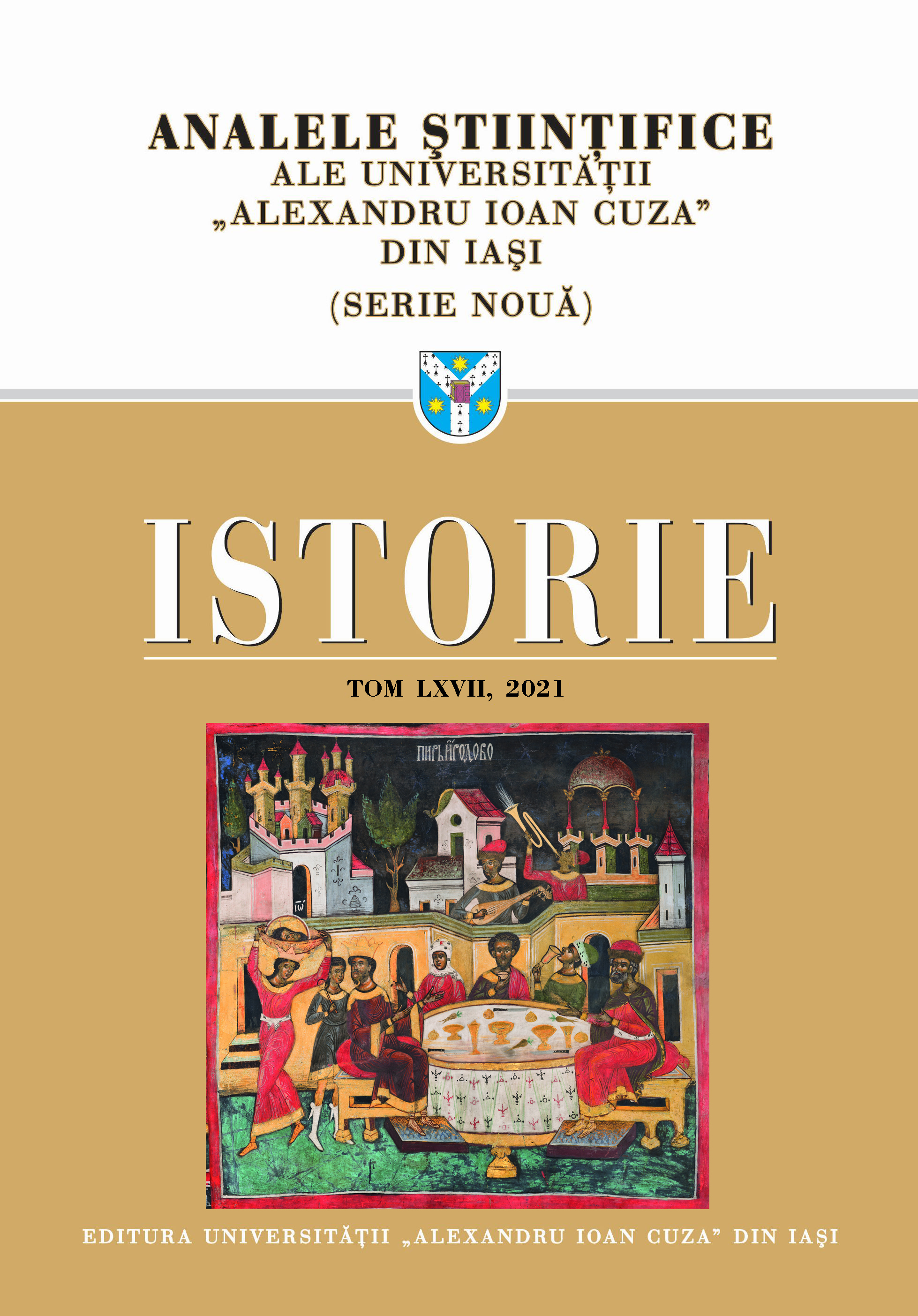Inelul jupaninei Vlădae. O descoperire arheologică şi implicaţiile ei istorice
Lady Vlădae’s ring. An archaeological discovery and its historical implications
Author(s): Minodora CârciumaruSubject(s): History, Archaeology, Cultural history, Social history, 15th Century, 16th Century
Published by: Editura Universităţii »Alexandru Ioan Cuza« din Iaşi
Keywords: Princely Court; Târgovişte; St. Parascheva’s church; Seaca-Muşeteşti monastery; archeological research; seal ring;
Summary/Abstract: The Princely Court from Târgovişte, the residence of the Wallachian princes for almost three centuries (from 15th to early 18th century), had in its premises, along with civil architectural components, three churches, built between 15th and 16th centuries: the later called Chapel Church or Lady’s church, today only party preserved, whose bell tower was overlapped by an imposing tower known as the Chindiei Tower, the Great Princely Church built, according to the old chronicles, in 1583-1584, and the third church, which offered the subject of the present study, St. Parascheva or St. Vineri, as it is also known, was built outside the fortified enclosure from the 15th century, but in its immediate vicinity. The project to restore the monuments of the Princely Court carried out during the 1960s also included St. Parascheva’s Church, which involved a series of archaeological investigations of the monument. Thus, a less common necropolis was identified, in which the funerary inventory objects (ornaments, sealing rings, clothing accessories) belonged to characters who were part of the aulic and urban elite of Târgovişte. In 2018, by resuming the archaeological research, the discovery of a sealing ring, with stone, made of gilded silver, customized by the inscription "JUPANINA VLĂDAE" (LADY VLĂDAE), aroused a special interest. Beside its spectacularity, determined by its massiveness, appearance and decoration, the inscribed name is the element that sends us to the beginnings of this place of worship, to its founders from 1517, Manea - Clucer and the lady Vlădae. The presence of the ring at the Princely Court of Târgovişte calls into question aspects of the life of this family of boyars from the beginning of the 16th century, and the historical implications around this valuable object of adornment.
Journal: Analele Ştiinţifice ale Universităţii »Alexandru Ioan Cuza« din Iaşi. Istorie
- Issue Year: 2021
- Issue No: 67
- Page Range: 59-75
- Page Count: 17
- Language: Romanian

